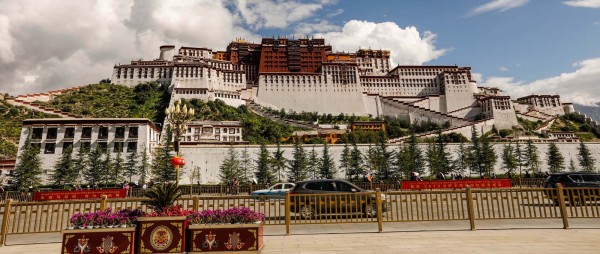Important Information
Region
Tibet Tours
Duration
7 Days
Max Altitude 5400m
Best Season March - November
Activity Per Day
5-6 hrs
Grade
Level 2
Group Size
2 - 20 people
Transportation Flight - Jeep
This Lhasa to Kathmandu Tour Highlights the most popular tourist attractions of central and southern Tibet. Places like Potala Palace, Barkhor Square, Gyantse, Drepung Monastery, Shigatse, Sera Monastery, and Everest base camp are the most famous among the many tours, a dreamland for many travelers all over the world. This landmark has captured the minds and imaginations of travelers and adventurers for centuries as one of the world's most astonishing and exotic places on earth. Travelers across the world make this trip for memorable, life-changing experiences on our insider's tour to Central Tibet. — Single men and women, couples, friends traveling together and families, are all welcome on this journey. Often beginning as strangers, your common interests in Tibet often create life-long friendships.
Himalayan Wander Walkers has exclusively designed this central Tibet tour package to assist travelers to explore the cultural wealth of Tibet. Besides witnessing a stunningly well-preserved architecture of cultural heritages and historical places, you also find a perfect getaway to cleanse yourself spiritually. As you bask in the grandeur of Potala palace, you bond with Tibetan culture and history. You can stroll along Barkhor markets to observe the colorful mosaic of Tibetan arts, culture, customs, traditions, lifestyle, and cuisine. Visits to Jokhang Temple and Drepung Monastery further heighten your excitement. In the towns of Gyantse and Shigatse, you have an exclusive opportunity to explore monasteries and fully immerse yourself in the Buddhist culture. On this tour, you are in for an experience of a lifetime.
Highlights of 7 Days Lhasa to Kathmandu via North Everest Base Camp Tour
- Experience the quaint culture of Tibet.
- Explore Buddhist spiritual sites.
- Discover the highest monastery of Rongbuk and North Everest Base Camp.
- Drive through one of the most beautiful highways crossing the pristine monuments, lakes, and high plateaus.
If you are planning to visit Tibet other than this tour packages and looking for someone to assist you. Please Customize your trip here. Our expert travel advisor will help you to create your tour with no regret at all.
Include
Accommodation on twin sharing basis in 3 star standards Hotels both in Tibet and Nepal
Daily breakfast in the hotel in Nepal and Tibet
All ground transfers and sightseeing by Private Land cruiser in Tibet and
Private car in Nepal.
English speaking local Tibetan guides.
Sightseeing admission fees.
Tibet Permit, China Visa
Drinking water
Tibet handy map
Exclude
Meals other than indicated.
Nepal Visa $25 each.
Expenses of personal nature such as drinks, tipping, laundry, phone, etc.
All Lunches and dinners.
Extra expenses due to nature and unforeseen events such as flight delay, cancellation, trip interruption due to inclement weather, civil unrest, etc.
Emergency medical transportation.
Travel insurance.
International airfares.
International fares are quoted separately.
Important Information
The price is quoted based on a minimum of 5 people in a group.
Please do contact us for fewer and more than 5 people.
Useful information
To apply for visa approval before your arrival we need:
a) A clear, color scan of your passport along with the advance amount of US $ 350. This must be provided to us at least 35 days prior to the arrival in Kathmandu.
Health & Altitude problems:
Traveling in Tibet involves high altitudes and can be strenuous. Clients with heart and lung problems or blood diseases should consult their doctor before booking the trip. Very often cases of altitude sickness have been reported. A simple headache, fever, loss of appetite, or stomach disorders can happen before the acclimatization. Advised, to drink approx. 04 liters of water per day, do not strain yourself, move slowly, breathe deeply, and take regular rests.
Frequently Asked Question
| {{type.min}} - {{type.max}} Pax {{type.name}} - {{type.desc}} | {{type.display_price}} per people |
Extra prices:
Let us help you decide Inquiry
You might also like

- 10 days
- Tibet Tours
Overland Journey to Kailash
Mount Kailash (6,638m) or Gang Rinpoche in Tibetan, located in the far-west of Tibet Autonomous Region of China on the unique geographic positioning close to the border with Nepal and India having a great transboundary for movement and linkage of trade in the past. The total area of...


